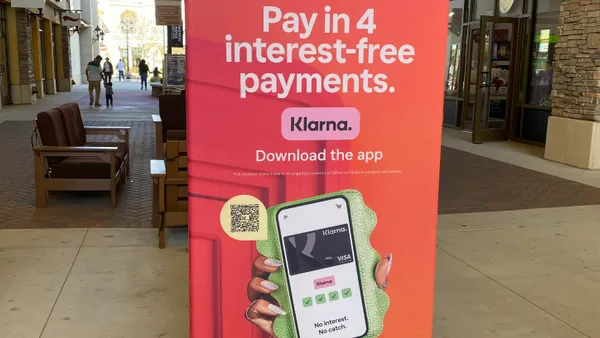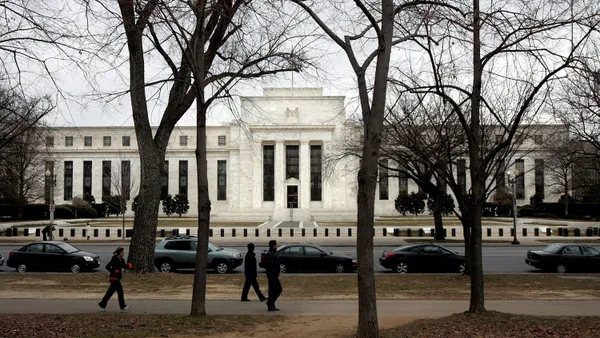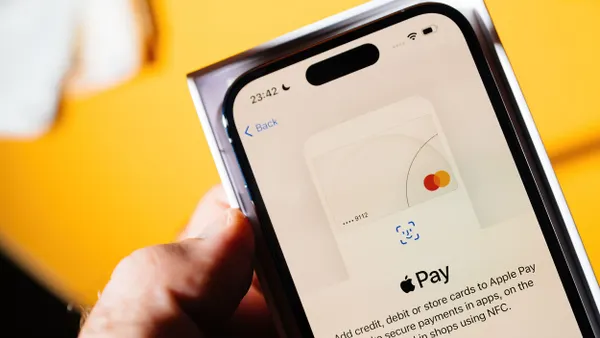Dive Brief:
- In North America, non-cash transaction volume is expected to increase 6.4% this year to $252.6 billion, relative to last year, according to a payments report from Capgemini Research Institute released this week. The world’s growth rate will be faster, rising at a 16.6% clip, the consulting firm said. By 2028, the North American figure will jump 7.3% over last year to $338.3 billion as the global figure rises 15%.
- Globally, half of cashless transactions will be made with debit and credit cards by 2028, with the next biggest share being instant payments (22%), followed by credit transfers (18%), the report said.
- Separately, worldwide digital wallet transactions are predicted to make up 61% of e-commerce payments by 2027, up from half last year, while they’ll make up 46% of in-store payments, up from 30%, the report said. Meanwhile, credit card use, ranking second a payment choice, will decline to 15% and 22%, respectively, from 22% and 27% last year, said the report, titled “Velocity, meet value.”
Dive Insight:
The consulting firm drew its report findings from executive surveys and interviews this year in 15 countries, including the U.S., Brazil, Australia and the U.K., tapping 600 corporate treasurers and 200 banking and payments executives.
Business-to-business payments will reflect overall trends. In North America, non-cash business-to-business transactions are expected to climb 7% this year to $56.2 billion, up from $52.5 billion last year, according to the report. That’s slower than the worldwide 10.8% increase. The North American figure is expected to soar another 7.5% to $75.5 billion by 2028, per the report.
With the predicted rise of cashless payments, Capgemini recommended that banks understand and embrace real-time payments and open banking, which will let users move their personal payments data from one institution to another more easily. “By breaking down silos and combining the power of open finance and instant payments, financial institutions can craft innovative and adaptive cross-product, multi-rail value propositions” the report said.
In the U.S., the Federal Reserve and The Clearing House have been vying for financial institutions to join their respective instant payment systems, FedNow and RTP. Since its launch last summer, FedNow has drawn hundreds of banks and credit unions, surpassing the RTP network adoption.
Amid its efforts to attract more financial institutions and ease their concerns about possible fraud headaches, FedNow is creating fraud-prevention features and has reportedly considered lowering its fees in the future.
Other research suggests instant payments could be particularly useful for businesses, but hurdles could stand in the way of more adoption. Financial institutions cited invoice payments, loan repayments and instant funding as the top potential use cases for faster payments, according to a recent survey by the U.S. Faster Payments Council and the fintech firm Finzly. However, many respondents said the cost of implementing instant payment technologies and managing dated systems would make adopting the new payment method challenging.












